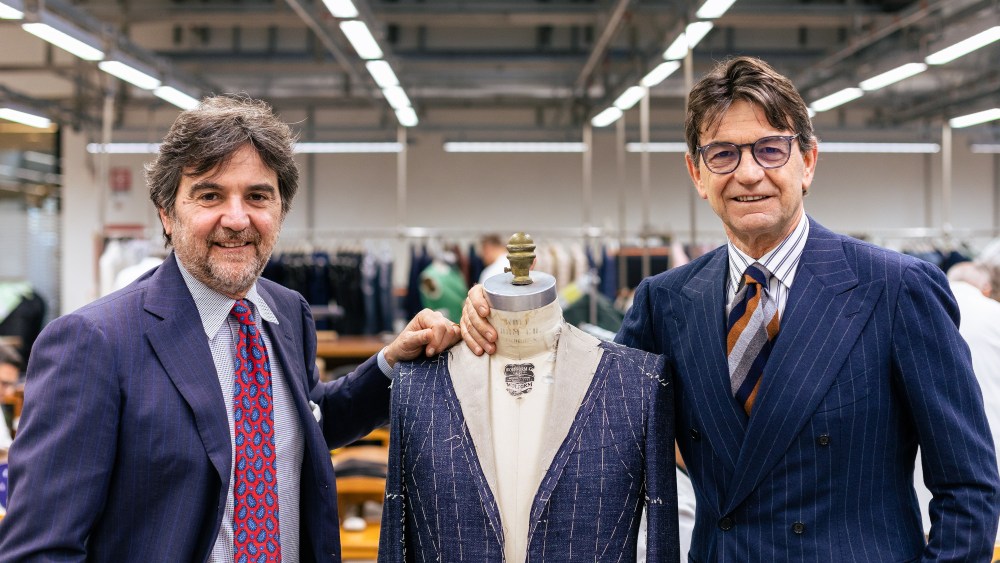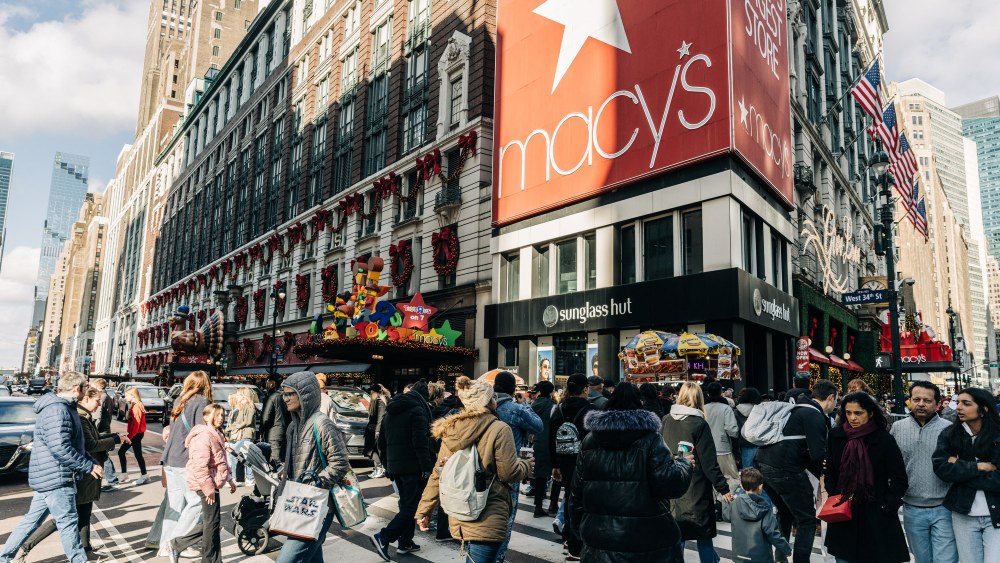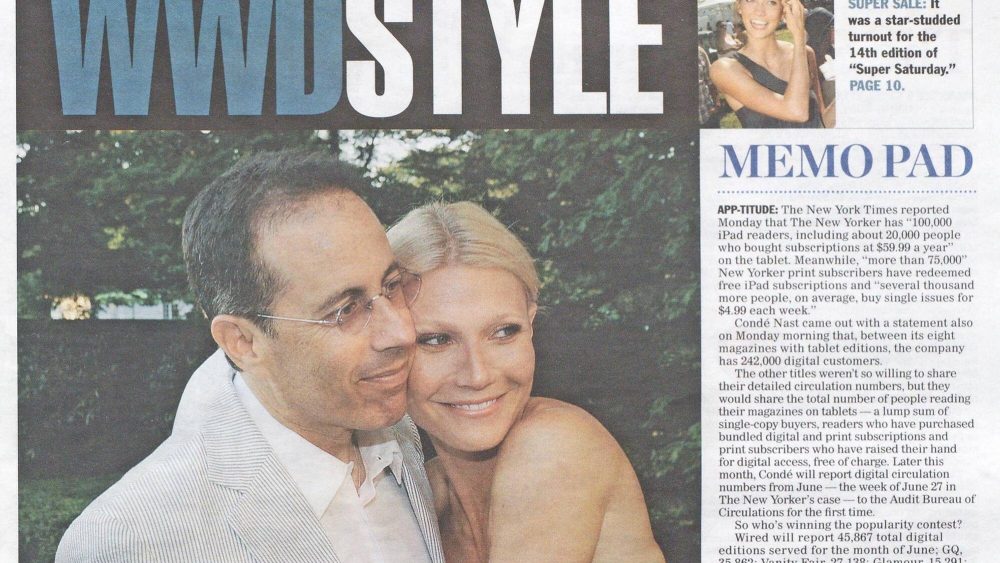Far from the bustling restaurant and shop scene on Spaccanapoli and the endless lines of tourists waiting to board ferries to Capri lies a different Naples.
The third-largest city in Italy with a population of around 1 million, Naples has long been known as a luxury menswear Mecca, home to some of the world’s most prestigious tailoring brands including Kiton, Isaia and Mariano Rubinacci.
Lesser known, but no less distinguished, is Cesare Attolini. Its history dates to the 1930s when Vincenzo Attolini, a young tailor in Naples, broke with the Savile Row-inspired suit-making tradition and developed a new silhouette that eliminated the padding and shoulder pads, resulting in a new light and unstructured fit. His creation would eventually come to define Neapolitan style.

His son, Cesare Attolini, began working alongside him in the tailor shop as a young man, learning to cut fabrics and shape and construct his father’s distinct silhouette. He went on to study in Turin at one of the city’s most prestigious tailoring schools and then returned to Naples and the family business.
You May Also Like
Today, the business is run by his sons, Massimiliano, president, and Giuseppe, vice president, who have remained true to the heritage of the company while also working to build a more-visible profile. Their game plan is open Cesare Attolini stores worldwide while carefully monitoring its wholesale distribution.
Unlike many brands that are aggressive in their expansion plans, Attolini is much more conservative. And that’s intentional — due to its limited production and high-quality standards. Each suit can take 25 to 30 hours to complete and no more than 35 pieces are produced daily.

The ready-to-wear jackets retail for $6,500 to $7,500 while suits sell for $7,500 to $9,500. Custom garments start at 30 percent more. Each fabric is exclusive to the firm — most are from Scotland — and no more than 15 pieces are made from each one.
Because of the detail and handwork in each garment, Cesare Attolini keeps its production limited to no more than 8,000 garments a year.
“It’s mind boggling,” said Massimiliano. “If an American entrepreneur heard this, they would say: ‘Let me run away from here, because this is not a business I’m interested in.’ That’s why I keep emphasizing to our clients that this is a mission, a passion of a family lineage. There’s no other way that someone in their right state of mind would choose this as a business model. But we inherited this business model, and we’re making it work. It’s a family affair — that’s the best way to describe it.”
Today, half of the production is ready-to-wear and the other half custom or bespoke. The core of the business remains jackets and suits but the firm also produces trousers, shirts and knitwear and outerwear in a knitwear-focused factory they purchased a decade ago in Umbria. There’s also a small factory in Naples that produces ties.

Maintaining the quality it has become known for remains paramount for the Attolini family, and its ace in the hole is the 140 artisans in its main workshop in Naples. These craftsmen and women are highly skilled in the distinct art of creating a Cesare Attolini Napolitan garment, using only needle, thread and scissors. Many specialize in just one part of the production process, such as cutting collars, sleeves or buttonholes, said Giuseppe, while the most skilled are able to work on all parts of the garments.
“Our workers are 100 Neapolitan — local people,” said Massimiliano, who added that many have worked for the family for generations. “To produce high-quality clothing like this, you need to have not only good tailors, but good relationships. We know the name of every employee, their daughters and sons, their husbands or wives. It’s like an extended family. We take care of them because it’s a very important asset. They are specialized for this kind of product. In other factories, there’s not as much handwork.”
But he admitted that it’s getting harder and harder to find tailors with the skill level needed to build an Attolini garment.
“We have a lot of people with white hair,” he said. “Probably in the future, we’ll have to bring in people from outside and teach them how to make Neapolitan style.”

It takes a special kind of person to be willing to spend the time it takes to master the art of tailoring at this level, they said. And while a lot of the workers are older, they have managed to attract some young people. But keeping them is a challenge and only three out of 10 apprentices typically remain.
“It’s too hard,” Massimiliano said. “They have to be patient. Young people come in and work, sometimes for years, next to a tailor so they can learn everything from the beginning. And then, step by step, we move them after one year to a different department of the workshop. The system we have to train young tailors depends a lot on what their sensibility, their passion, their talent and skills are. After five or six years, they are still learning.”
They bemoaned the fact that the government of Italy provides little support for young artisans, making it harder for companies like Attolini to sustain their craft. “Italy is the country of high-quality manufacturing and the politicians do nothing to protect this kind of business,” Massimilliano said. He suggested that the government offer incentives such as tax cuts or assistance in buying a home to young people who follow this path.

“It’s not like it was 40 or 50 years ago when people were not going to school and they needed a job and would take anything,” he said. “Today, young people go to school, they want to not only have money but also be proud of where they work.”
And if things don’t change, he predicted that small production facilities such as Attolini will disappear within the next 20 to 30 years.
But for now, Attolini has enough staff to create the collections needed to grow its business.
Today, there are five Cesare Attolini stores around the world: New York, Miami, Milan, Monte Carlo and the most recent addition, London. The plan is to open no more than 20 globally so the company can continue to service its most-important wholesale clients such as Bergdorf Goodman in New York and Stanley Korshak in Dallas.

“We’re much more selective in our distribution and verticalizing into our own shops, with companies like Hermès already leading the way in that direction,” Massimiliano said. “But it’s a natural direction because when you have a such limited production, you have to be selective in the way you distribute your product.”
Although the bulk of the business continues to be its handmade sport coats, suits and shirts, the family knew that when it got into the retail business, it had to offer more products.
“The turning point was when we opened our New York shop 12 years ago,” Massimiliano said. “It was evident that we had to have complete collection — it couldn’t be just tailoring, so we also had to develop sportswear. These categories are not as artisanal and labor-intensive as the handmade clothing. We don’t have unlimited production, but we have more capability in those categories than we do in the clothing.”

This fall, the company will also introduce shoes for the first time, launching with three styles of a Leisuretime loafer that will retail for $1,300 and be available at its own stores.
Going forward, they said two stores will be added in the Middle East through a franchisee and cities such as Tokyo, Munich, Dubai and Los Angeles are also on their radar.
While still small compared to its Italian competitors, the brand has most definitely developed a foothold in markets such as the U.S., shining a light on its distinct Neapolitan style.
“Thirty years ago when we started to sell in the U.S., we had to explain what Neapolitan style is — very soft and unconstructed like a second skin,” Massimiliano said. “In the last two years, people have started to really understand and finally appreciate the Neapolitan style.”



